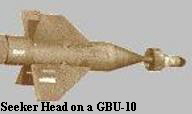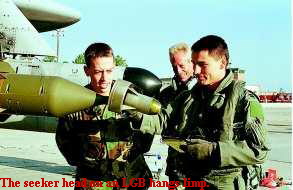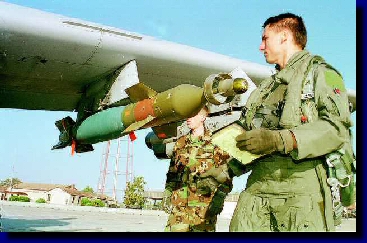|
"We
didn't know enough about lasers at all ..." -- Weldon Word
Although certainly not a new discovery to
science by 1965, the laser was virgin territory for the TI engineers. At first,
they didn't know how to read if the machine was on or off. It was a simple
problem with a simple solution, Word remembers. "We got this thing and we were
out on the outskirts of Dallas on about a three story building. We were
shooting the laser at a Plano, Texas water tower about a mile away. That was
the only thing sticking out of the ground. We didn't know anything about
safety. We didn't know enough about lasers at all. We were using wet emulsion
Polaroid film. The only way we could tell the laser worked was to take the
Polaroid film, hold it with your finger tips and stick it front of the laser.
We knew it was on and working if it blew a hole through the film about the size
of a penny right through the film," Word recalls.
The laser may have
presented a unique set of detection problems, but at least it was a tangible
device. The seeker was designed and built from a concept which had been drawn
out on a sheet of paper. There was no such device. A challenge, the seeker was
the part of the system the team had to develop on their own. 
The engineers figured out that a silicon material
could be used to detect the light, they fashioned a thin wafer of the silicon
and placed it in the front of the seeker. The material detected the laser light.
The next challenge was the aerodynamics of the sensor. After running through a
few mathematical analog computer simulations on machines that required
programming in terms of turning gears and cogs, TI aeronautical engineer Dick
Johnson struck upon the idea to use an aircraft probe. Johnson thought that a
probe device, which is used to measure air flow around leading edges of
aircraft, would work aerodynamically as a seeker.
"We struck on the idea
of lets put the seeker in a Geanini Probe," Word said. "What that will do is put
the seeker, the instrument that is looking for the spot the instrument that is
giving guidance directions." The probe resembled a badminton birdie, and from
then on it was dubbed the "Birdie Head."
The engineers couldn't just slap
the probe on the end of the bomb, and brand it a guided weapon, though. It had
to be aerodynamic. There was no funding to test the aerodynamics of the laser
guided bomb shapes in a wind tunnel. A back yard swimming pool held the answer.
Johnson made several scale models of the fat shaped World War II bombs and used
a swimming pool to test their aerodynamic wind flow.
"About a month into
this, Dick came in with a little model he had made at home. It was about
10-inches long. We took that model, went out to the swimming pool and dropped
it. He had different size control surfaces and he was trying to get the dart to
have stability with the smallest size fins we could make. We had to get it
under the wing of the airplane, and if you couldn't get it going outwards you
had to go radially," Word recalls.
The lack of money in late 1965 also meant the team
had to be creative in the test approach used at Eglin Air Force Base, Florida.
With no funds for large data collection devices and expensive machinery, the key
word in the test program was "improvise," Nick Baker recalls.
"When we did
the first tests, well, we didn't have enough money to go put a nice telemetry
system on the weapon. We had a high resistance tape recorder that you just
screwed in the fuse well. That bomb would go down and burrow down and it may go
off to the side, and we had to find it to recover this tape recorder. It looked
like we were digging up half the county down there to find the things. You had
great big cranes out there digging up all these holes to recover that data. You
normally think of test programs with big telemetry systems, and we did not have
a wealth of data. If you had to stand out there for a week digging, then it was
worthwhile to do that. You just had to have that information. No matter what
the result was that created the hole in the ground, you had to have the
information to judge the performance of it."
Digging in the sand and clay
of west Florida was worth the trouble to the TI team. Out of ten bombs tested
on the Florida ranges, eight were deemed a success, coming within thirty feet or
closer to the target. The Air Force began combat trials of the bombs in 1968,
and based on those, the Paveway was redesigned and mated in the summer to the
"slick" shaped or (for an explanation of aerodynamic shaped bomb click here) Mark-80 series of bombs.
Continue to "Usage"
|
|















